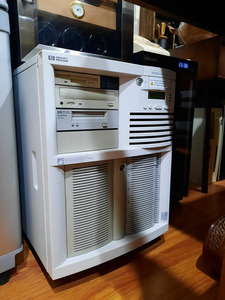I recently became the owner of a dual pentium III system. I wanted to have one since early 2000.
And now, to be honest, I can't find a real use for it.
Back then it was just not meant for games.
First you needed a system that could use multiple CPUs. So it was NT4, W2k or XP (in 2001)
Linux also used multiple CPUs well, but was not a viable gaming platform in 2000.
Once you had XP/2000 installed (because you don't want to game on NT4) and you start installing games, you realize that period correct games just don't use multiple threads. And now your 1.0 -> 1.4 GHz PIII is just too slow in single thread mode.
On the top of that, good luck finding a correct PCI graphics card. (Unless you have luck and/or money to buy a dual PIII motherboard with AGP)
And as this was also highlighted, the pentium III lacks some instructions sets. So trying to use binaries that needs these instructions will probably crash the program, or lead to awfully slow performances. As an overly simplify and technically incorrect analogy, it's like if your game needs DX11 and you have a DX7 card. It just can't work, not even with slow framerate. A binary requiring SSE3 or AVX-512 will just not work with a PIII. On Linux, this can be mitigated because you generally can compile the software from source. And the compilation toolchain can produce binaries without these instructions. (See https://en.m.wikipedia.org/wiki/X86-64#Microa … itecture_levels)
Games/applications using more than 1 thread only became prevalent 5 to 7 years later. Even in 2005/6, performances were better with a A64 Fx57 1c/1t than with a 2c/2t 200Mhz lower clocked Fx60. The second core could not compensate for the 200 Mhz speed difference.
So in my opinion, dual (and the far less common quad) PIII systems are just only popular among retro geeks. Because these systems were insane back then. But it never was a gaming plateform.
Sometimes, the hobby leads us to build things that did not really existed (or were super uncommon). Like using K6-2+/K6-3+ or pentium Tillamook mobile CPUs on desktop boards. Or knowingly forgetting the fact that 1.4 tualatin came out around the same time as P4 2.2Ghz Northwood and Athlon XP 2000+ Palomino. These things are just dream machines + a lot of fun.
"Hello, my friend. Stay awhile and listen..."
My collection (not up to date)
